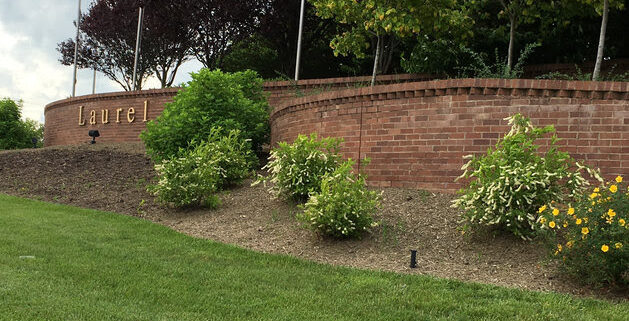Community Associations Supporting the Local Ecosystem
Article by Plant NOVA Natives
Homeowner and condominium associations make many of the decisions that will determine the future of the birds and butterflies of Northern Virginia. Not only do community associations set standards for landscaping on private property, they also own and control large amounts of community property, including much of what is left of the undeveloped land in Northern Virginia and the environmentally sensitive areas along many streams. In recent years, the managers and Board members of more and more community associations have started adopting practices that both increase home values and support our local ecosystem.
Each community has its own needs and standards, but there are some common themes. For example, most developments have lawn areas that require heavy inputs of chemicals and labor to maintain. Often these lawns came into existence not because they were needed but because sowing turf grass was the fastest way for the builders to prevent soil erosion after the area was regraded. In the long run, erosion and stormwater control would be managed better by naturalized areas. Excess lawns can be thoughtfully converted simply by planting more ornamental native trees and shrubs along the edges and gradually allowing them to fill in. Another common situation is lawn that is being mowed right down to the edge of a stream or pond, which results in contamination of the waterways from runoff. It is a simple thing to create a buffer of native plants, ideally 100 feet on either side, though any buffer is better than none. Yet another example is invasive plant management, a problem that might not have existed when the community was first developed but which by now has become an unavoidable component of responsible land stewardship.
Some communities enjoy a more relaxed look, while others prefer a more formal appearance to their landscaping. Either way, there are many opportunities for helping songbirds and turtles without any major change to the overall aesthetics. Among the hundreds of species of Virginia native plants that are available from nurseries, there are ample examples of those that conform to a conventional look. Healthy lawns can be maintained by using organic materials to enrich the soil and reduce the need for chemical applications.
To help residents and decision-makers in community associations explore the many options that are available to them, the Plant NOVA Natives campaign is hosting a series of short symposiums, starting on October 4 and November 2, which will be repeated over time to allow participation by representatives from the thousands of HOAs and condo associations in Northern Virginia. Details and registration can be found at https://www.plantnovanatives.org/symposiums-for-hoa-and-condo-assoc-. The campaign has also created a website section that outlines ideal practices, local resources and many examples of what local communities have already accomplished, often in a budget-neutral method. It can be much cheaper, for example, to control erosion by the strategic use of native plants than by digging trenches or building walls.




